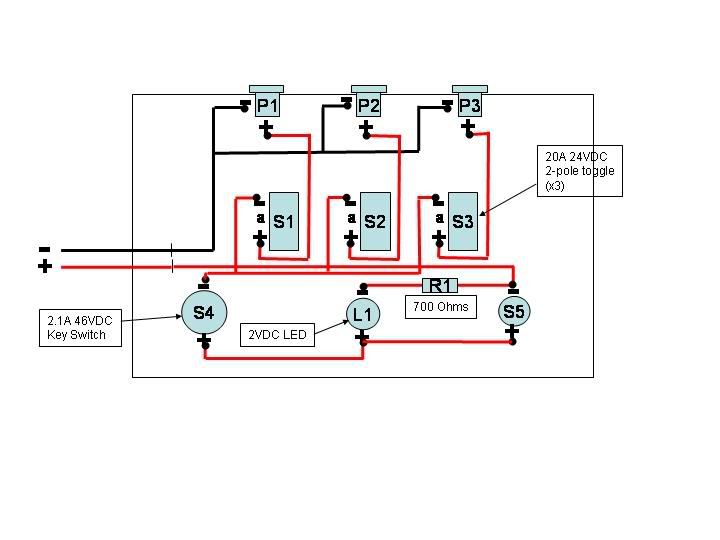rockets2000
Well-Known Member
- Joined
- May 10, 2009
- Messages
- 73
- Reaction score
- 0
With the decision to build a MPR also came the need to buy or build a controller for composite motors/ignotors. After looking online for commercially available units and coming up short, I decided to build one to suit my needs. Who would have known I would find it on this forum!  Thanks to Michael (kiliman09) for his design. I decided to modify it a little, but the basic design was borrowed from here: https://www.rocketryforum.com/showthread.php?t=2129
Thanks to Michael (kiliman09) for his design. I decided to modify it a little, but the basic design was borrowed from here: https://www.rocketryforum.com/showthread.php?t=2129
The box and basic component layout (inside)
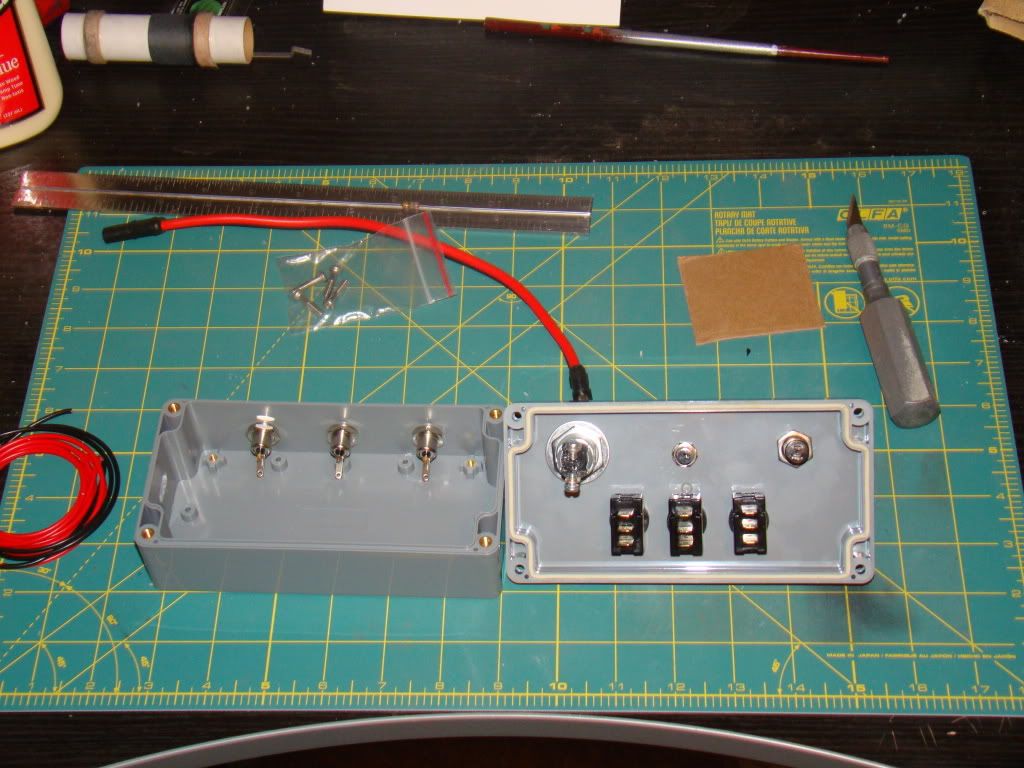
Outside showing the swiches and big red button
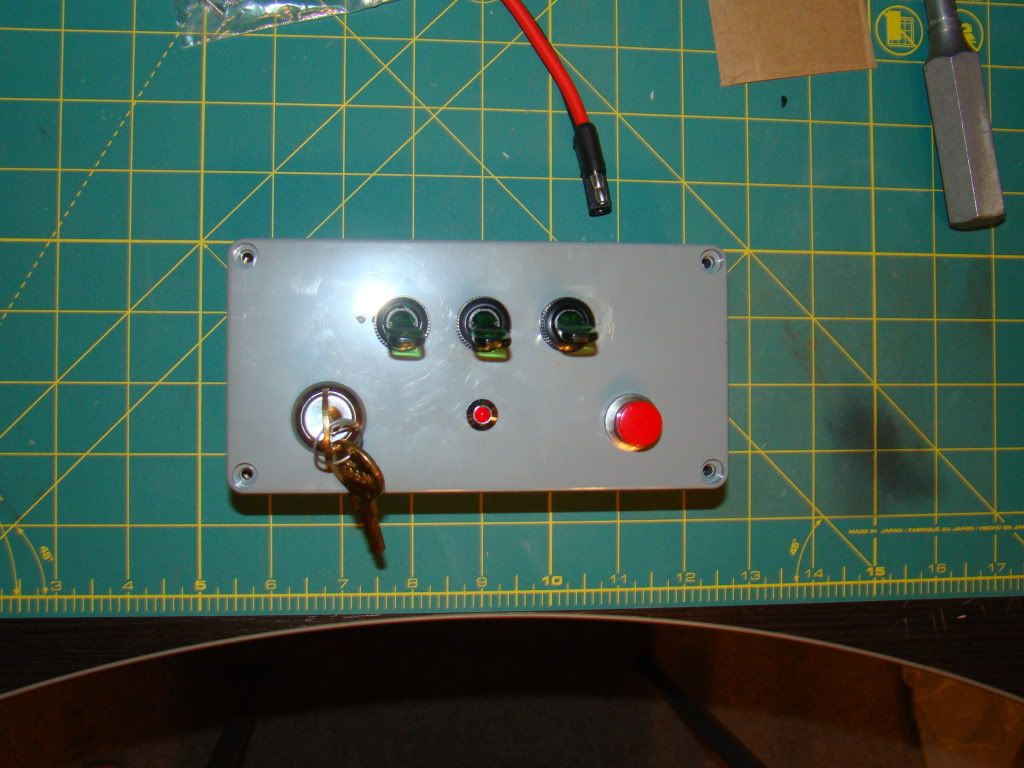
I wanted to streamline the apperance, so I substituted the pad terminals with easy plug-in recptacles, and lighted toggle switches because they're cool
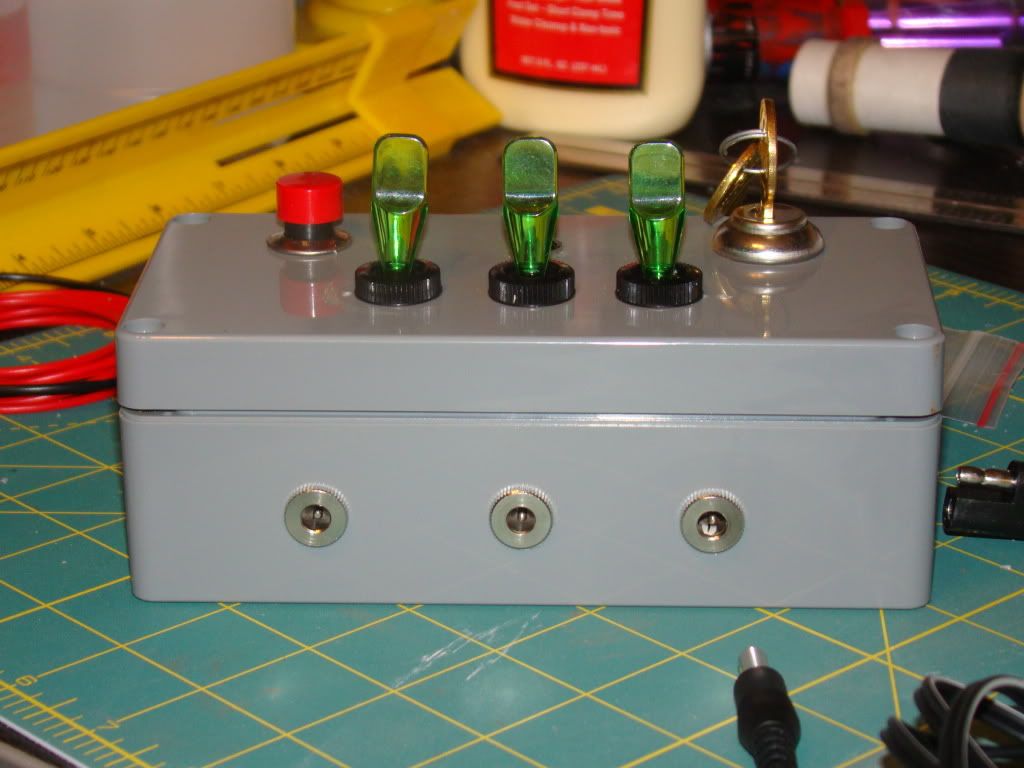
External power is provided by a 2-pin insulated pigtail that will be cut in half and spliced into 30' of 12g Zip-wire with clips to a car battery, Odessey, or equivalalent on the other end
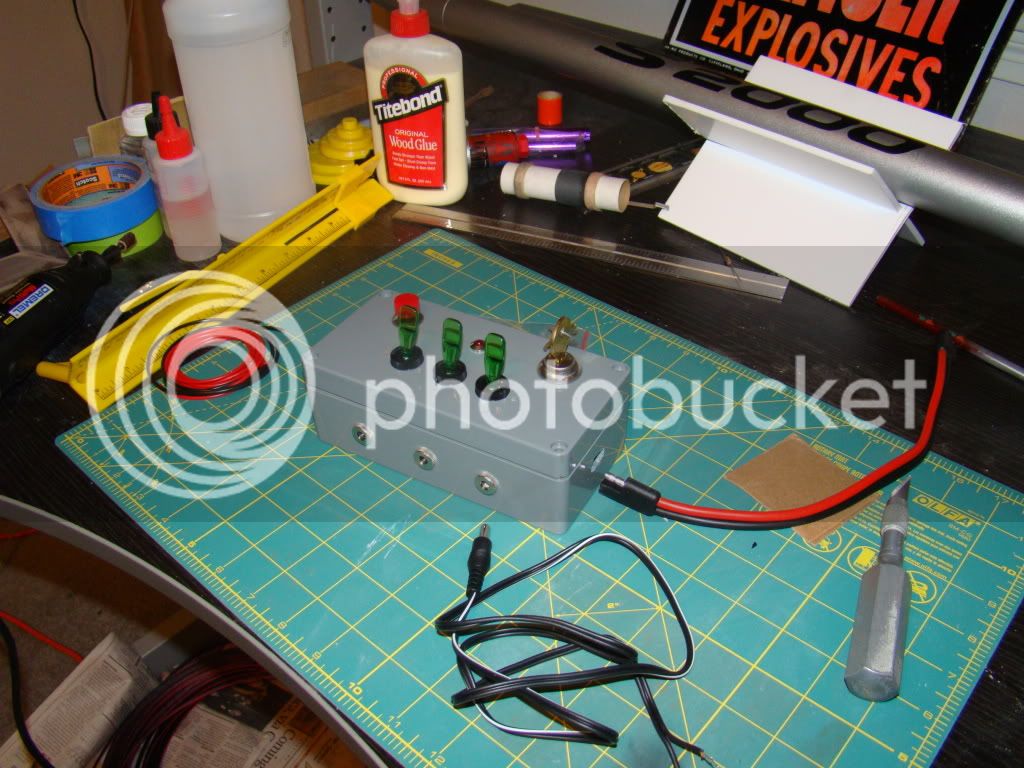
Each pad will be connected using a standard stereo connector spliced into 30' of 16g zip-wire to flat clips at the ignitors
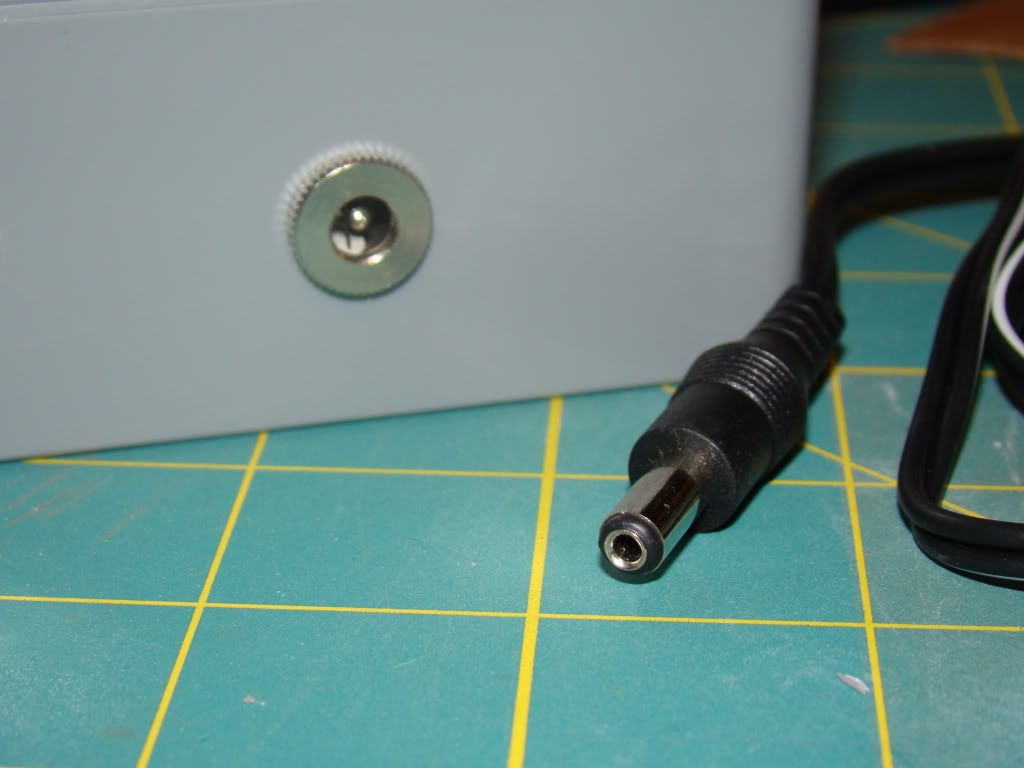
I still have to wire it, so more pics later. Thanks for looking and any comments are appreciated!
Sean
The box and basic component layout (inside)

Outside showing the swiches and big red button

I wanted to streamline the apperance, so I substituted the pad terminals with easy plug-in recptacles, and lighted toggle switches because they're cool

External power is provided by a 2-pin insulated pigtail that will be cut in half and spliced into 30' of 12g Zip-wire with clips to a car battery, Odessey, or equivalalent on the other end

Each pad will be connected using a standard stereo connector spliced into 30' of 16g zip-wire to flat clips at the ignitors

I still have to wire it, so more pics later. Thanks for looking and any comments are appreciated!
Sean




